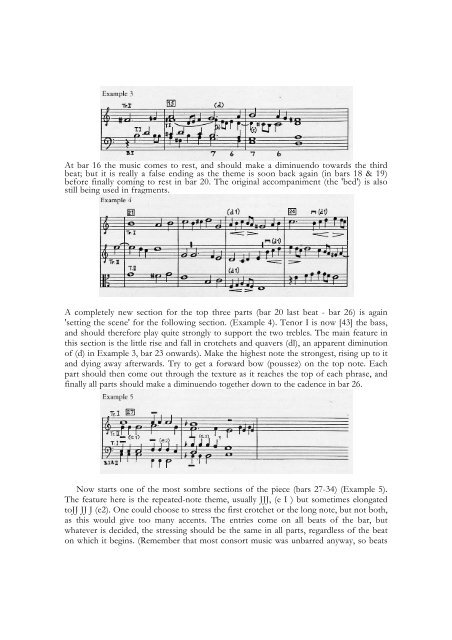Create successful ePaper yourself
Turn your PDF publications into a flip-book with our unique Google optimized e-Paper software.
At bar 16 the music comes to rest, and should make a diminuendo towards the thirdbeat; but it is really a false ending as the theme is soon back again (in bars 18 & 19)before finally coming to rest in bar 20. The original accompaniment (the 'bed') is alsostill being used in fragments.A completely new section for the top three parts (bar 20 last beat - bar 26) is again'setting the scene' for the following section. (Example 4). Tenor I is now [43] the bass,and should therefore play quite strongly to support the two trebles. The main feature inthis section is the little rise and fall in crotchets and quavers (dl), an apparent diminutionof (d) in Example 3, bar 23 onwards). Make the highest note the strongest, rising up to itand dying away afterwards. Try to get a forward bow (poussez) on the top note. Eachpart should then come out through the texture as it reaches the top of each phrase, andfinally all parts should make a diminuendo together down to the cadence in bar 26.Now starts one of the most sombre sections of the piece (bars 27-34) (Example 5).The feature here is the repeated-note theme, usually JJJ, (e I ) but sometimes elongatedtoJJ JJ J (e2). One could choose to stress the first crotchet or the long note, but not both,as this would give too many accents. The entries come on all beats of the bar, butwhatever is decided, the stressing should be the same in all parts, regardless of the beaton which it begins. (Remember that most consort music was unbarred anyway, so beats
















